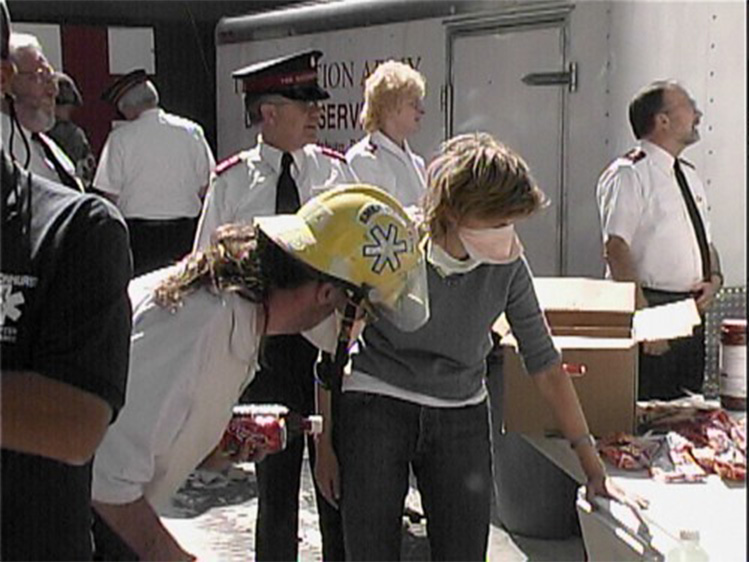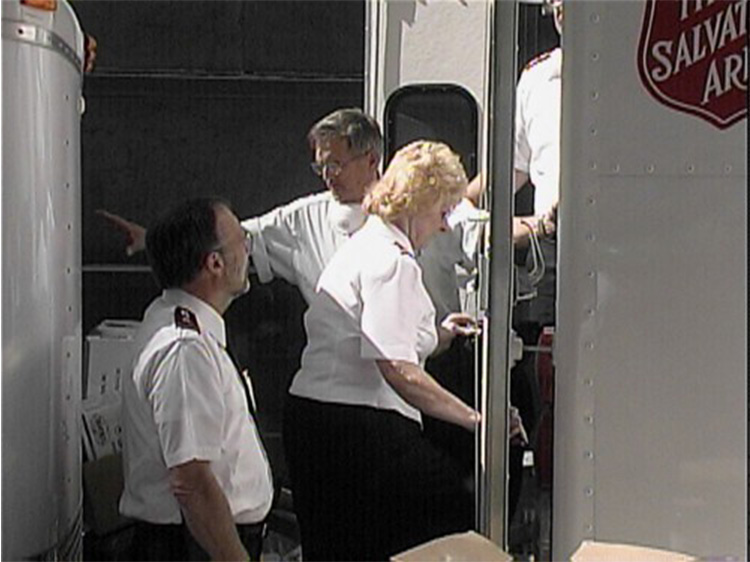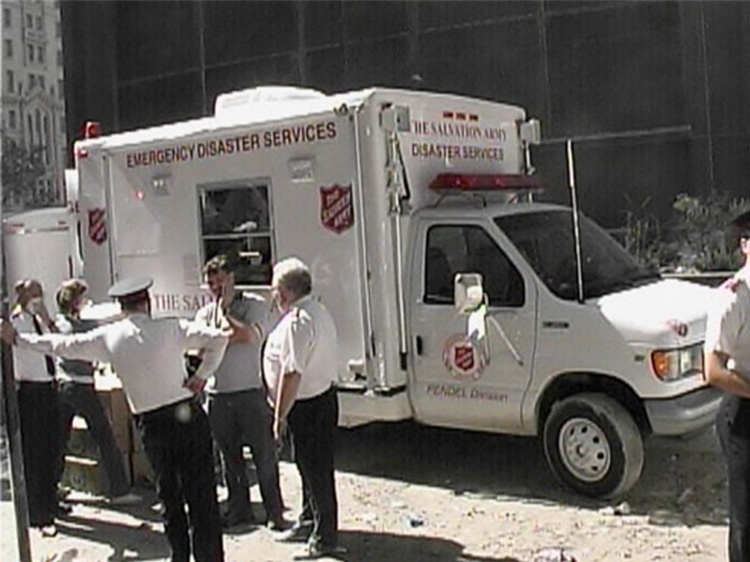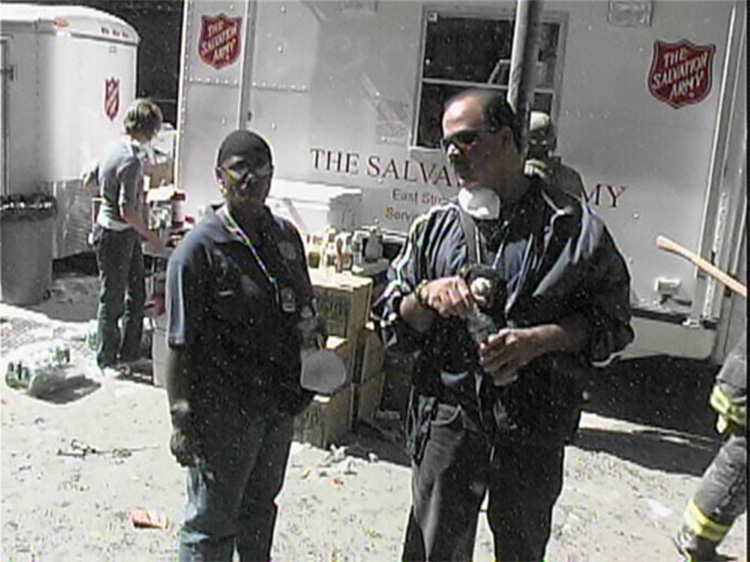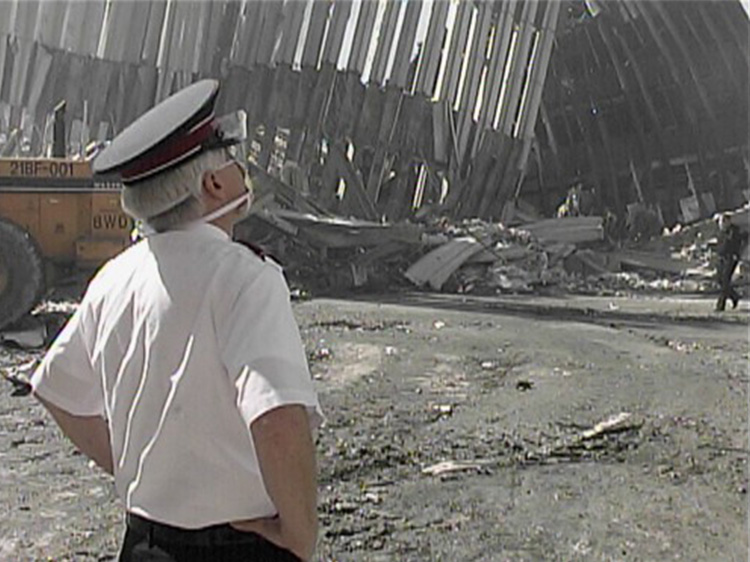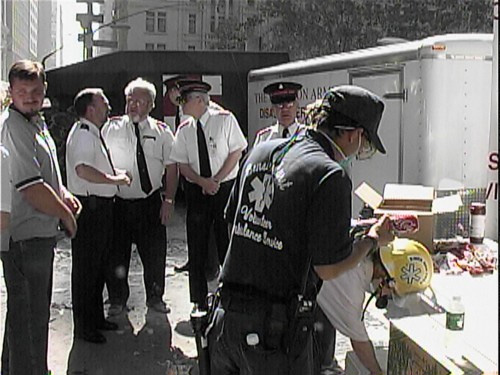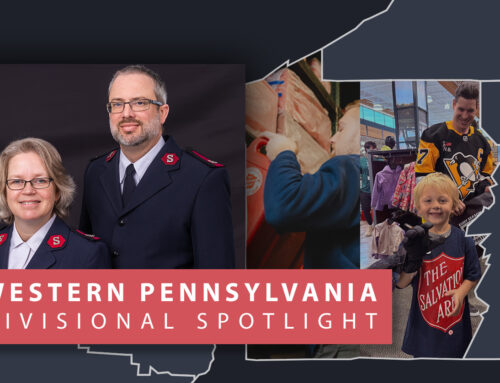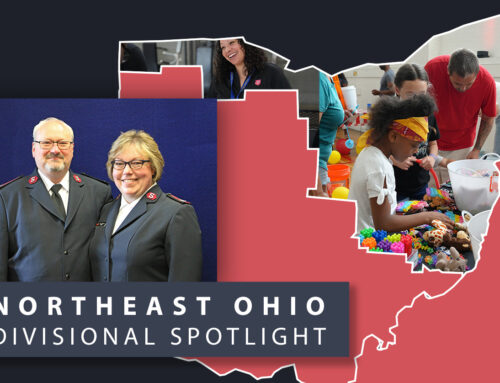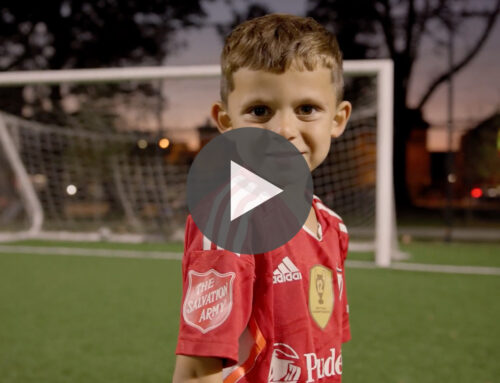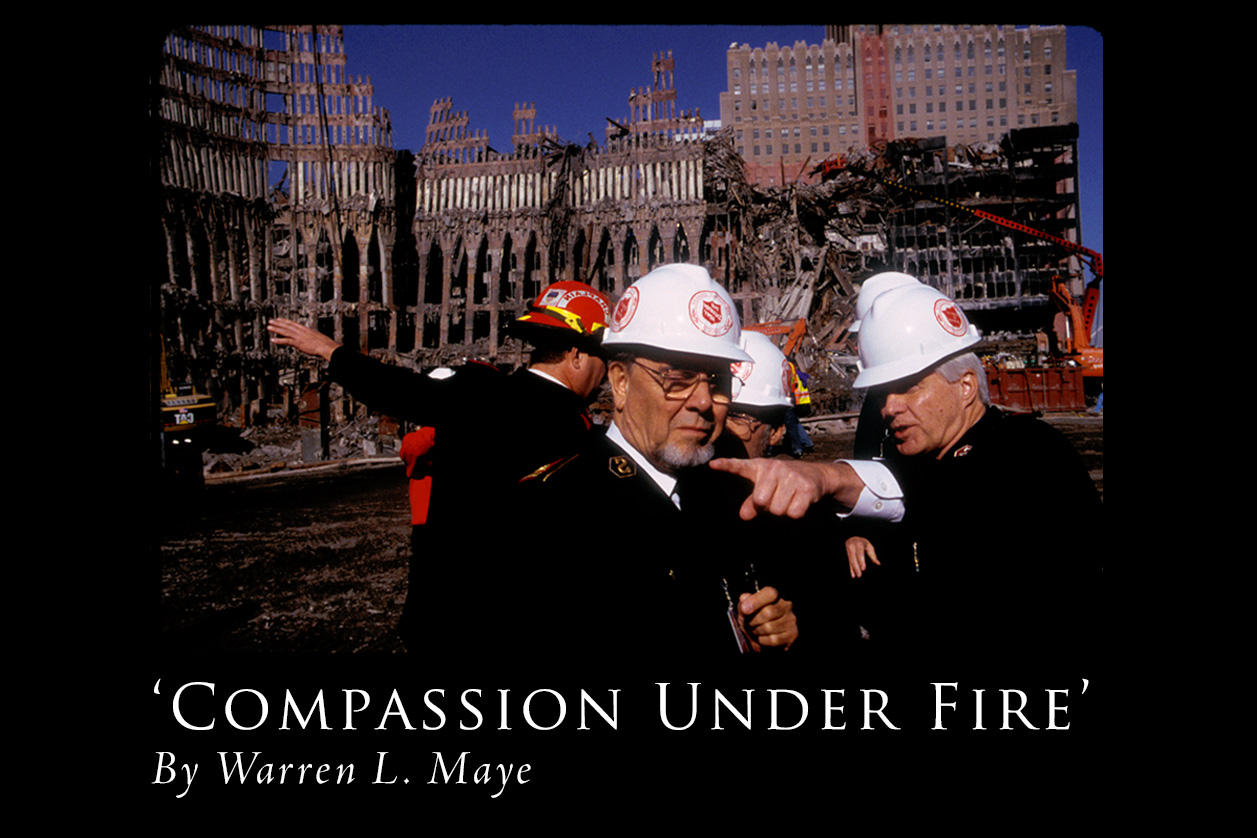
'Compassion Under Fire'
by Warren L. Maye
Reflecting on the events of September 11, 2001, I recall a personal experience I have yet to share. My assignment took me into the American Express Tower at 3 World Financial Center with emergency disaster officials and leaders from The Salvation Army just days after the attacks.
Blown-out windows and a fine layer of soot and dust from the pulverized towers created a haunting atmosphere. Since that catastrophic day, the offices had been untouched. Soot covered clothes, briefcases, lunches, coffee cups, desktops, and computers. The personal items left behind highlighted the panic workers must have felt as they fled for their lives. As we slowly walked through the building, we were instructed to leave everything undisturbed and take no photographs.
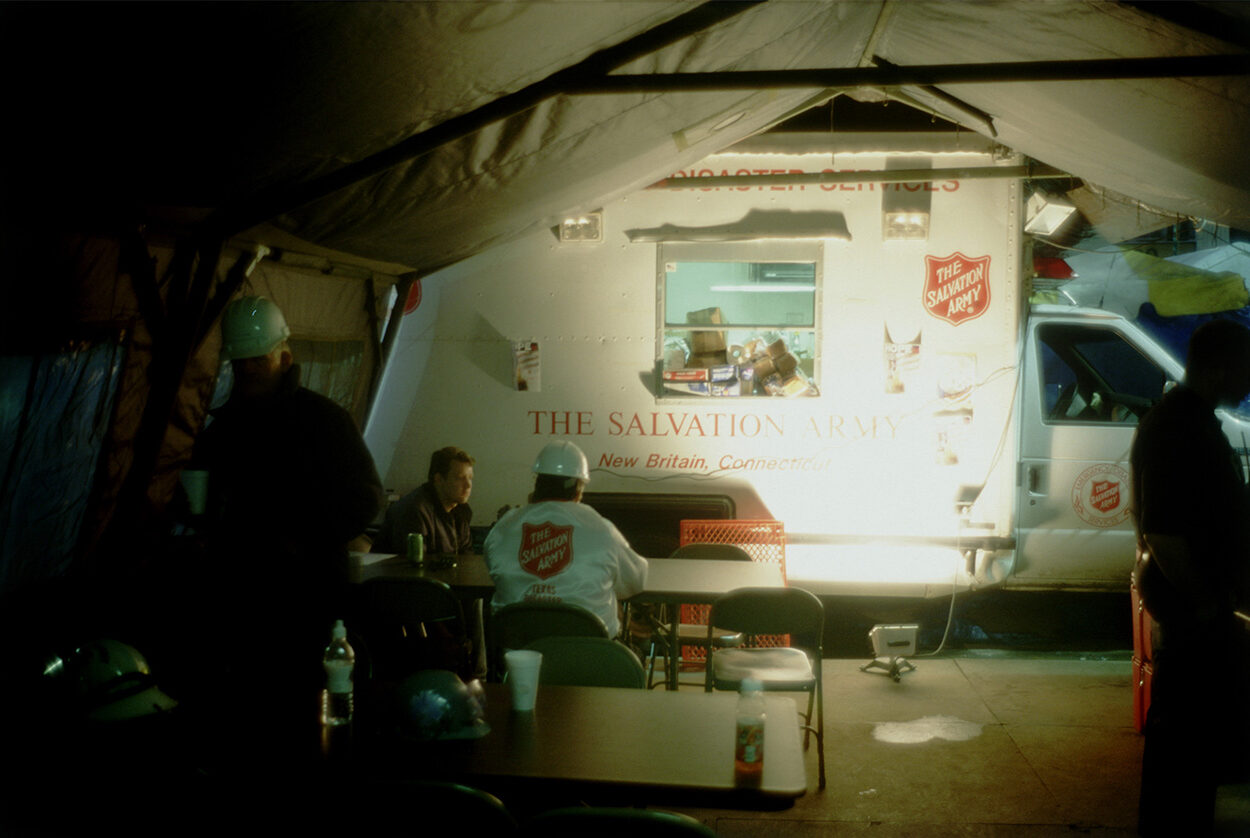
A heartfelt prayer
Eventually, we emerged onto a balcony overlooking “The Pile,” where the buildings had collapsed. From that vantage point, we could also see the river and the Statue of Liberty. I vividly remember the heartfelt prayer led by General John Gowans of The Salvation Army, with Commissioners William W. and Marilyn Francis and other leaders. We removed our hard hats, bowed our heads, and prayed — for the nation, the families of those lost, the survivors who would be rebuilding their lives, and the many busy rescue workers on the ground.
Around ground zero, toxic fumes filled the air as many first responders — firefighters, police officers, rescue workers, and volunteers — worked tirelessly to search for survivors and, later, for nearly 3,000 victims. Unfortunately, inhaling the hazardous particles posed severe health risks. Some responders fell ill within days, others after months or years.
“There was some smoke, the smell of rubble, and a little bit of everything,” said Major Marie Larrínaga. At that time, she and her husband, Major Federico Larrínaga, alongside cadets from the College for Officer Training, were among the first Salvationist teams on-site.
Major Federico recalled that “we had no masks,” and his wife developed a serious cough shortly after. This ongoing cough led to regular monitoring and treatment through the World Trade Center Health Registry, which has tracked the health of those involved in rescue and recovery efforts and people who lived, worked, or went to school near ground zero for over 20 years.
The Salvation Army’s involvement was dubbed “Compassion Under Fire,” reflecting our commitment to long-term support. We were the first relief agency at ground zero, arriving within 30 minutes of the first plane crash. The Army was granted control of the feeding operation at a site known as the “Taj Mahal,” a large tent that became a haven for tired rescue workers. Supported by local New York City restaurants through the Restaurant Revitalization Program, The Salvation Army provided food at the Taj and essential items to relief workers. Most significantly, the Army’s pastoral caregivers offered emotional and spiritual support to those working under extreme conditions.
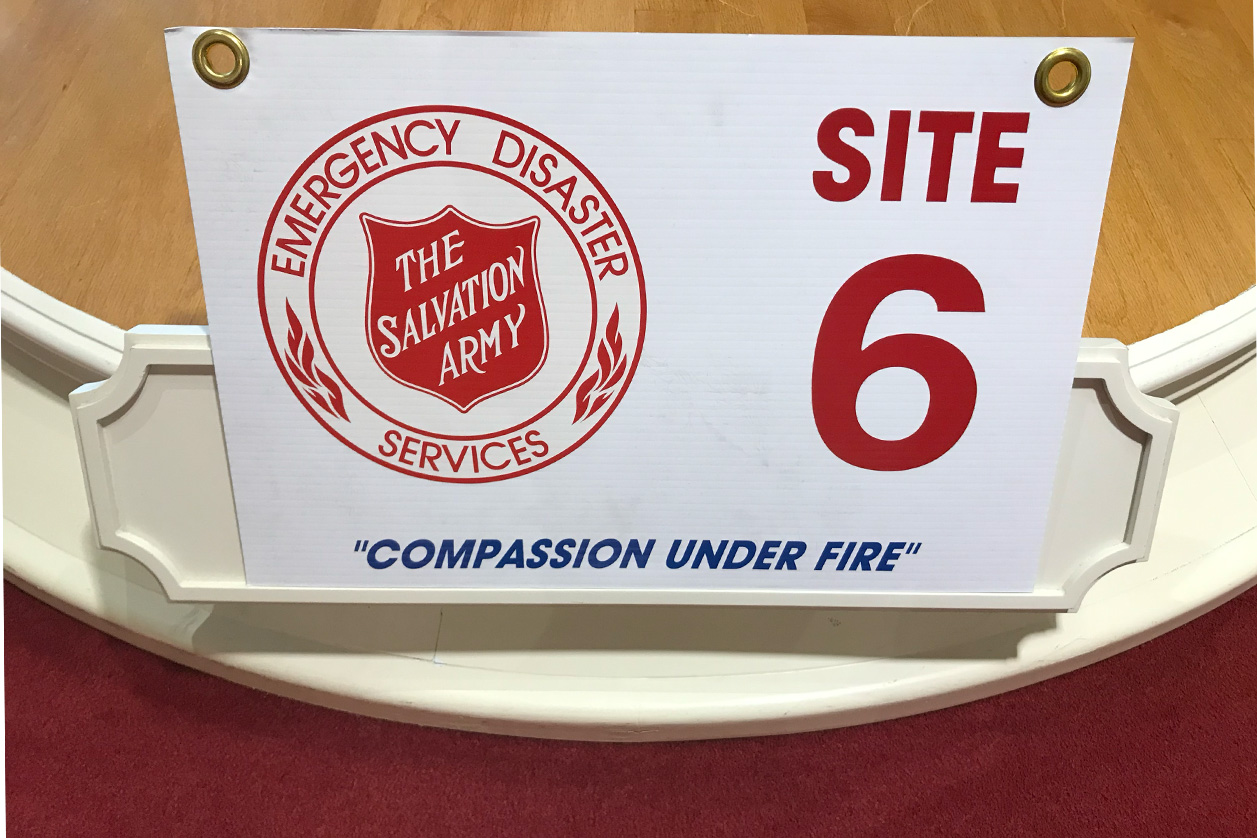
Using mobile canteens, counselors, and thousands of volunteers, the Army provided support to relief workers for nine months, concluding operations in May 2002. Beyond ground zero, The Salvation Army extended financial and emotional assistance through the Disaster Assistance Services Center, a hub for access to various services.
Additionally, the Army offered care through the Family Assistance Center, where individuals who lost loved ones could obtain death-related services. Acknowledging numerous unmet needs, the Army established the World Trade Center Recovery Program, providing long-term support for those who lost family members, homes, or jobs. Over five years, service coordinators helped individuals access a range of resources, including death benefits, eviction prevention, job training, and support groups.
The Salvation Army was the last organization to provide specific post-9/11 case management in New York City. By the program’s close in 2006, remaining individuals in need were referred to local corps. In total, the Army delivered an impressive 3.2 million meals, with 39,000 officers, volunteers, and staff contributing over 1 million volunteer hours and more than $90 million in donations.
The forgotten attack: Reflections on the 1993 World Trade Center bombing
Many people seem to have forgotten the first attack on the World Trade Center, but it remains vivid in my memory. When I think of 9/11, I also recall Friday, February 26, 1993. At noon, a massive 1,200-pound bomb in a rented van exploded in an underground garage beneath the north tower. The blast tore through the World Trade Center complex, devastating several basement levels and leaving a 180-foot-wide crater.
The explosion shattered walls and ignited fires. Smoke and dust filled the air, causing workers to choke and struggle for breath. Some sustained head injuries from falling debris. I met many of the evacuees as they exited the building. For countless individuals, walking downstairs in the 110-story building took two and a half hours, shrouded in smoke and darkness. One worker, Maureen Gomes, noted that she descended 206 flights with two flights of stairs per floor.
Gomes, who suffered from bronchitis, found her condition worsened by the stressful experience. Upon emerging from the building, exhausted and gasping for air, she and her co-workers sought help.
After receiving emergency medical attention in an ambulance, they came across The Salvation Army’s canteen. Grateful for the assistance, they approached the canteen and were each given a warm blanket, hot chocolate, and a granola bar. This small comfort provided much-needed relief in a chaotic situation.
“Since I hadn’t had breakfast, I was not only cold, but hungry too,” said Gomes. “I really appreciated their help.”

